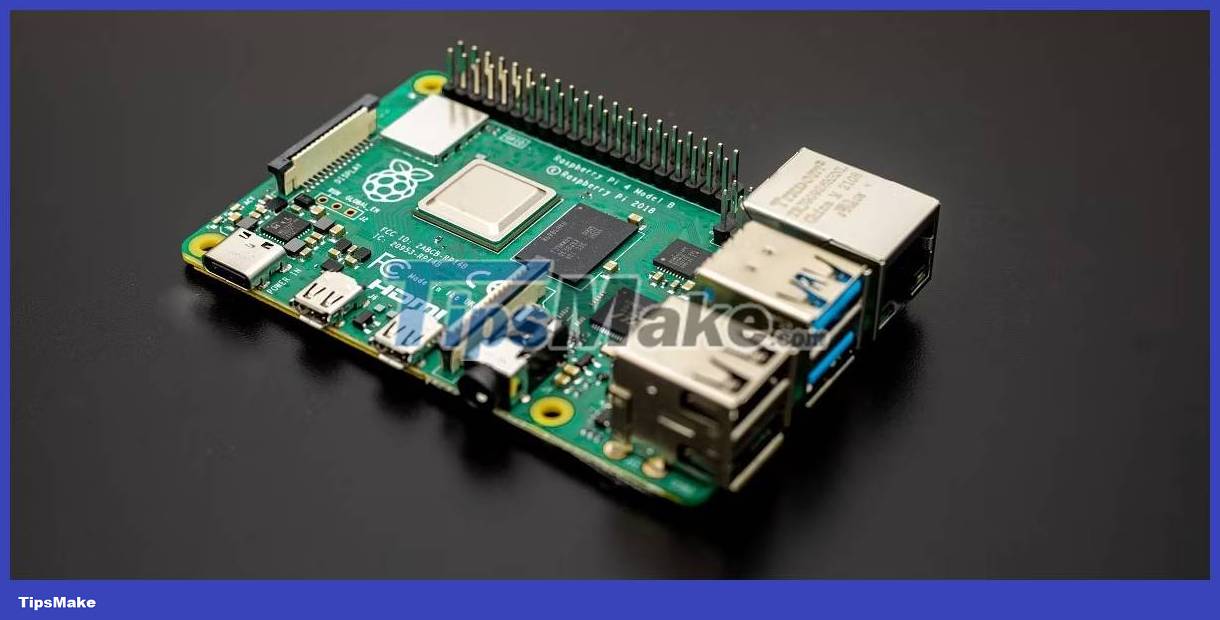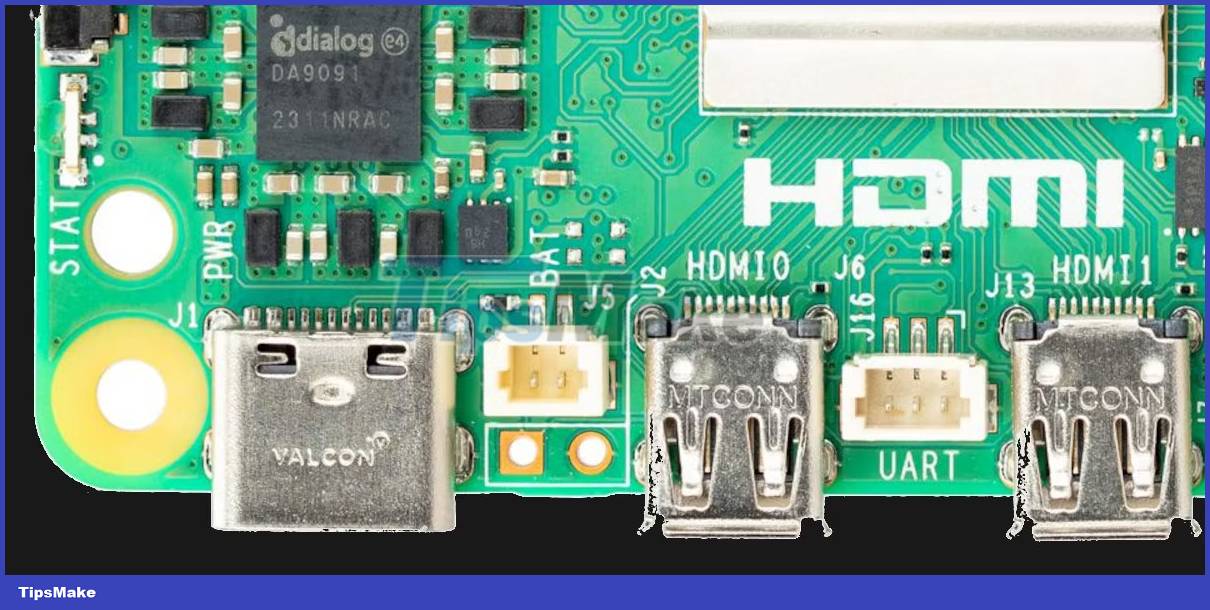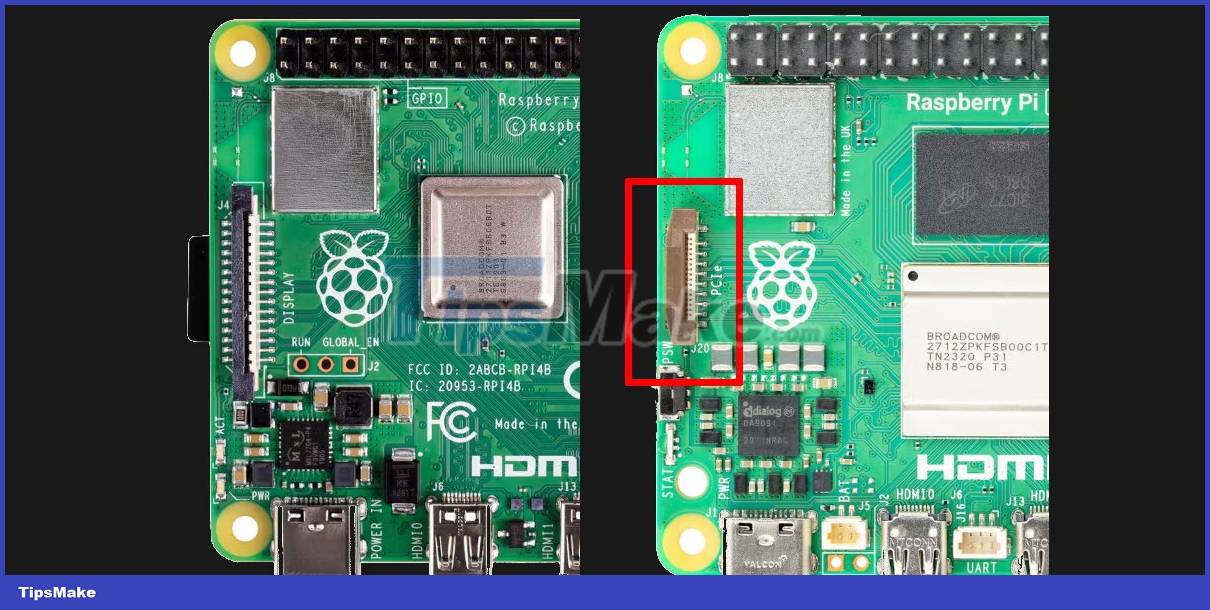5 disadvantages when switching to Raspberry Pi 5
While the Raspberry Pi 5 is undisputedly the current champion of this popular family of single-board computers, performance benchmarks don't tell the whole story and the Raspberry Pi Foundation's latest SBC has some drawbacks. Need to consider before upgrading.
Are Raspberry Pi 5 and Raspberry Pi 4 the same?
At first glance, the new Raspberry Pi product looks similar to the previous model. After all, they both have the same credit card design and share the same template: Ports, interfaces, and chips on the blue printed circuit board.
However, upon closer inspection, key differences become apparent, such as the new Cortex A76 CPU, which offers 3x the speed of the Pi 4. There's also the RP1 I/O driver. , which dictates the I/O functions in the new Raspberry Pi, the soft power button, the FPC connector for PCIe, and a slightly different arrangement of ports.
So what are the limitations of Pi 5, especially compared to older models?
6 disadvantages of Raspberry Pi 5
1. RPi 5 is more expensive than older models
The Raspberry Pi 5's exciting new features come with a slight price increase. The 4GB and 8GB versions are officially sold for 60 USD and 80 USD respectively, 5 USD higher than the Raspberry Pi 4B. This increase may not seem like much, but it means that Raspberry Pi single-board computers are gradually becoming more expensive. If this trend continues, the Raspberry Pi could become expensive, losing an important part of the original value of this SBC.
If you're not too concerned about increased power consumption and have access to a GPIO interface, you can buy one of those for a little more money. But if you're looking for the best supported single-board computer, look no further than the Raspberry Pi 5.
2. Raspberry Pi 5 does not have a headphone jack

As mentioned, the Raspberry Pi 5 has some impressive new specs while retaining the same credit card form factor as its predecessors. To achieve this, the company had to remove the 4-pole analog audio and composite video jack, which means you can no longer use the 3.5mm jack to output audio and video.
Of course, the Raspberry Pi 5's audio jack is somewhat inferior and prone to noise and distortion. However, it is very useful for those who do not want to spend extra money to buy an external Digital-to-Analog converter (DAC).
Now that the 3.5mm jack is no longer available, you may want to purchase a separate DAC that connects to the Raspberry Pi via USB or GPIO, or opt for HDMI/Bluetooth audio instead. A pair of 0.1" pads on the bottom edge of the board can provide composite audio.
3. The need for cooling is increasing
Greater power will produce more heat. The Raspberry Pi 5 pushes the envelope on what can be achieved with a single-board computer, and the increased heat generation comes with a more powerful processor.
For comparison, the Raspberry Pin 5 idles at 65°C (149°F) while the Pi 4 has an idle temperature of around 45°C (129°F). Both boards will accelerate when temperatures reach 176°F and accelerate further at 185°F.
The Raspberry Pi 5 is much warmer than all previous Pis, and although the Raspberry Pi company says cooling is optional, you may want to invest in some kind of passive or active cooler to Get the most out of your Raspberry Pi 5.
The Active Cooler for Raspberry Pi 5 costs $5 and is one of the accessories that will help you get the most out of your Pi 5.
4. Older cases will not fit the Raspberry Pi 5
If you were hoping to use your previous cases for the Raspberry Pi 5, this won't be possible, unfortunately. The port layout has been changed in this new version of the Raspberry Pi single-board computer, with the Ethernet port moving back to its old position on the 3B+ and the 3.5mm jack gone. All of these additions and changes mean that your old Raspberry Pi 4 case will not fit into the Raspberry Pi 5.
But you don't have to work too hard to find a case that fits your new motherboard. The Raspberry Pi Company sells a modular case with an active cooling fan designed to work with the Raspberry Pi 5. It comes in classic red and white colors and a black/grey variant that has yet to be released.
5. Raspberry Pi 5 still uses MicroHDMI

While micro HDMI display ports are not exclusive to the Raspberry Pi 5 and are not a drawback in the strictest sense, some hope to see full-size HDMI ports in the next generation of Raspberry Pi. Competing single-board computers such as the Orange Pi 5 and Rock 5B are equipped with full-size HDMI ports.
Micro-HDMI isn't the worst display port, but it's prone to damage, clogs, and is often harder to use on the go. Obviously, the fact that the Raspberry Pi uses micro HDMI is a drawback. It takes up less space and is more suitable for small, portable SBCs, but with all the changes that have been made in this version, users can't help but wonder if a slight increase in size is acceptable. get no.
6. RPi 5 has only one PCI Express lane

PCIe is another welcome addition that the Raspberry Pi 5 introduces to the product line. This interface is exposed through the FPC connector which can allow you to connect high-speed peripherals such as SSDs, network cards, and graphics cards to the Raspberry Pi.
RP1, the I/O driver on the Raspberry Pi 5, uses 4 of the 5 available PCIe lanes from the application processor (AP). This leaves only one PCI Express lane available for connecting external peripherals, limiting what can be achieved with this interface.
Is Raspberry Pi 5 worth upgrading?
The Raspberry Pi 5 certainly has a lot to offer in terms of performance and connectivity, and there are even cheaper variants coming later.
However, all changes seem quite small compared to the previously released Raspberry Pi 4 Model B. If you're happy with your current model, there's no need to upgrade. But if you want more power or can't resist buying the device, the Pi 5 is still a worthy choice.
 12 best file compression tools on Linux
12 best file compression tools on Linux Are humans or machines better at detecting deepfakes?
Are humans or machines better at detecting deepfakes? How do password cracking tools work? How do you protect yourself?
How do password cracking tools work? How do you protect yourself? How to fix AutoCAD lagging errors
How to fix AutoCAD lagging errors Difference between EATX and ATX motherboards
Difference between EATX and ATX motherboards Pros and cons of using cloud storage for remote work
Pros and cons of using cloud storage for remote work